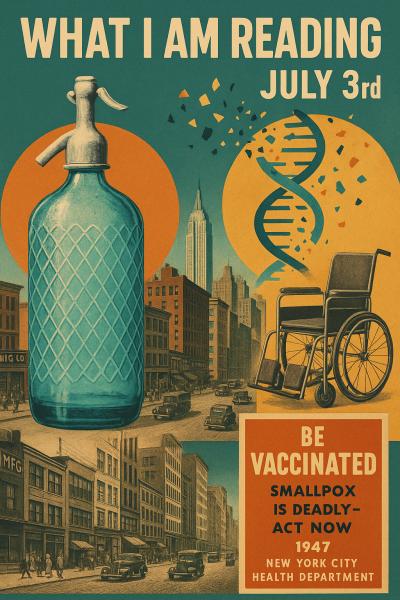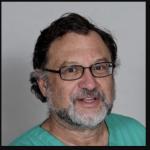
I like sparkling water, you know, the water infused with carbon dioxide either naturally or, dread thought, artificially. Of course, I am of an age when I remember seltzer bottles delivered to your home, much like glass bottles of milk.
“A century ago, New York City was a hub of manufacturing—from the clothing factories that gave Manhattan’s Garment District its name, to the headstone makers that dotted the Lower East Side when it was a Jewish enclave, to the shipbuilding operations in the Brooklyn Navy Yard and the iron foundries of the Bronx. In the 1930s, dozens of seltzer plants filtered and carbonated city tap water and filled it into airtight siphon bottles. Today, Brooklyn Seltzer Boys is the sole survivor in the five boroughs, and one of only three seltzer plants in the country.”
From the Smithsonian Magazine, The Effervescent History of Seltzer, From the Early Days of Home Delivery to Today’s Trendy Cans
David Sedaris has a way of bringing common events into his own slightly “angulated” perspective. In writing about his partner Hugh’s need for a hip replacement and its aftermath, he notes,
“Two months after Thanksgiving, Hugh would turn sixty-five and be eligible for Medicare, but even that was too long to wait. Luckily, we have health insurance, and it appeared that our plan would cover the brunt of the cost. And so, in what seemed like very little time, he was scheduled for surgery at one of the hospitals within a short walking distance of our apartment. There are a number of them, so many that when our friend Tracy was looking for a place on the Upper East Side, and we suggested our part of it, she instead chose to get something thirty blocks north. “All the Google Street Views I looked at in your neighborhood showed people who were crying,” she told us.
It’s something I hadn’t noticed until she said it. Then I thought, She’s right! If our sidewalks are clean, it’s likely due to a steady downpour of tears, mostly in the vicinity of Memorial Sloan Kettering.
The place Hugh went to was called the Hospital for Special Surgery. “It’s the best,” his doctor said, as did many of the retired residents in our building who’d had their hips and knees and shoulders replaced there. “If you need a walker or a wheelchair, just ask,” any one of them would tell us. “I’ve got one in the basement!”
From The New Yorker, Your Hip Surgery, My Headache
Among the pantheon of science writers is Siddhartha Mukherjee. Recently, he wrote,
“DNA seemed to be cast off from dying cells like debris from sinking vessels. What appears as waste may serve as witness—a sock, a spoon, a necklace drifting from a submerged compartment, each hinting at a life once lived. Might these fragments in our blood carry messages from the cells that released them? Could scientists assemble these molecular scraps and reconstruct the identities of the cells they came from?”
Screening tests and precision medicine seem so hopeful, but underneath the good “vibrations” are problems that have remained intractable. From The New Yorker, The Catch in Catching Cancer Early
In 1947, a smallpox outbreak occurred in New York City. The mayor mobilized the city’s public health infrastructure and what was to become Big Pharma, producing 6 million doses of vaccine that were given to city residents over two months. We forget smallpox at our peril—the Eradication of Smallpox, a YouTube video by way of the Marginal Revolution.



